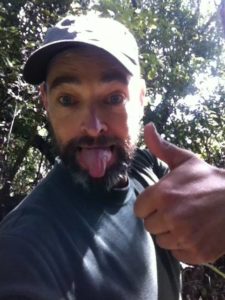
I got a text from my mate Robbie, “Wanna come down Rakiura-Stewart Island and check some traps?” I’d never been to the ‘Third Island’, and had heard enough raves about backyard kaka and beaches chocka with kiwi to make my answer obvious. This bird nerd was raring for a range in Rakiura.
Robbie is one of the industrial designers behind Goodnature. They manufacture a suite of animal traps taking on invasive pests in NZ and globally (from mongoose in Hawaii to American mink in Sweden).
The trap is set on a trunk. Attracted by bait, the target animal triggers a fatal blow to the skull via a gas-fired piston, then drops to the ground. The innovation is that the trap automatically resets, ready to strike again — up to two dozen times. (A sprung conventional trap is impotent until it’s manually reset.) A gas canister used to inflate a flat mountain bike tyre was the Eureka! moment behind the trap’s design.
We picked up Department of Conservation trapping guru Darren Peters and set off from Wellington. The trip down was the evolution of powered flight in reverse: jetting through security scans and air bridges, to picking up our bags from a tarmac pile in Invercargill and boarding an eight-seater to land on Rakiura’s Mason Bay beach. We helped the pilot push the plane onto wooden blocks so it wouldn’t sink into the sand.
Kiwi footprints — punctuated with the ski pole hole of the beak — were pointed out as we vetted possum traps under the manuka scrub. Death dates of the possum carcasses and the viability of different baits (peanut butter = good, urine extract = promising) were debated. Then it was an island-hop to a strip of tarmac scratched into the forest: the runway of NZ’s southernmost settlement.
On the porch of our Oban digs a Cortina of bush bogans (aka kaka parrots) rolled up and got onto the dance-floor early, swinging from the guttering. Above them in the rimu a gubernatorial kereru watched a kakariki pair chatter past. Rakiura was living up to reputation as a National Park that happened to have some human inhabitants: visiting birders, hunters and fishers, and the 400 resident Obanites who don’t mind the odd sea leopard or yellow-eyed penguin hogging their spot outside the Four Square.
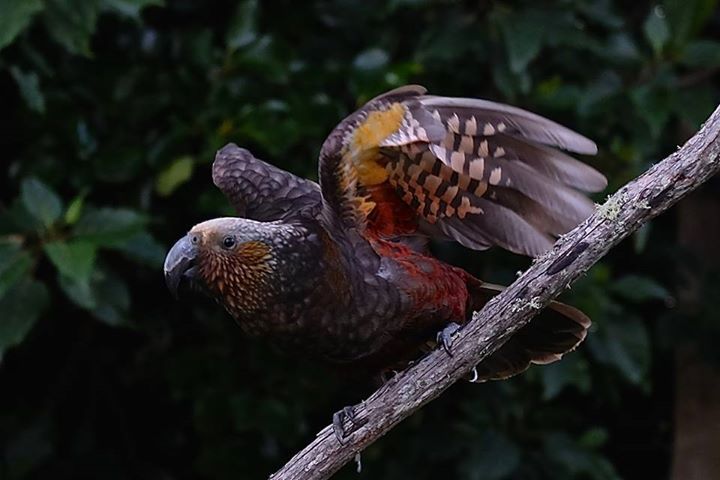
I queried how the kaka had survived the deprecations of introduced pests that had eliminated the island’s Buller’s Book of Birds’ stars like kakapo and kokako. There are no mustelids, goats, mice or pigs on Rakiura, and Darren mentioned the work of community groups like SIRCET, and spillover benefits of the nearby Dancing Star Foundation sanctuary, with its predator proof fence providing a mothership for resurgence.
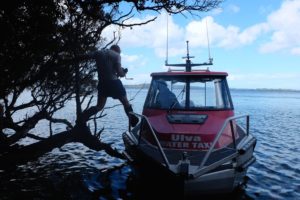
The next morning we watched the Ulva Water Taxi driver row his dinghy Venetian-style (standing, pushing oars facing forward) to fetch our boat. On Native Island the only air bridge was the leap from the water taxi onto rocks. But the red carpet was rolled out for us courtesy of fallen rata blossom. Robbie led me around a forest trap-line, where we encountered plenty of manu: wily weka poking around the forest floor to the throb of a bass beat, the outrageously twee wee miromiro (tomtit) chasing insects; a tui in a white bow tie, oil-slick black tux; a kaka doing freestyle tricks in a silver fern …
We rendezvoused with Darren for promised paua diving. I was sure that the stories of a diving in the nud’ ritual were a trap for the Northern newbie, but Bluff was close enough to be called. I suppressed thoughts of great whites, striped off and dove into the kelp. The temperature was fresh but no colder than Wellington’s South Coast and, despite some subantarctic shrinkage, it’s a truism that you rarely regret a swim.
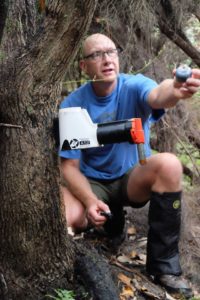
Back in Oban, thoughts turned towards southern craft beer and Church Hill restaurant’s titi potstickers. As Darren whet appetites with a paua and garlic butter fry-up, a local muttonbirder popped in to chat to Robbie. She wanted a pest control method on her family’s island that protected the titi’s habitat, and didn’t involve dropping toxins into the burrows of their traditional food source.
The following day Robbie assigned me a monitoring line on Native, with a warning to keep an eye out for sea lions. It could’ve been another credulity test for the visitor “from the other side” (as non-islanders are known), but I wasn’t taking chances and signed out of Facebook. I nearly tripped over a quarter tonne bull on the edge of the dunes. The plus-sized sunbather let me know when I was too close for ‘selfie with sea lion’ with a huffed bark.
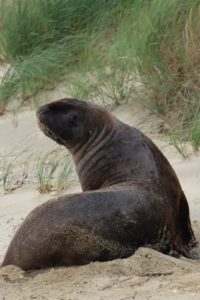
The February sunshine tag-teamed with a hailstorm and we waited to see if the taxi could push through the weather. Jumping on to the taxi’s bough in-between swell surges gave a focused end to our island adventure.
The tracking tunnel results? A single rat blotted total termination. But re-invasion wasn’t unexpected considering that Native Island is less than 50m from Rakiura. The Goodnature grid means any rat’s visit is going to be short-lived. Native Island is — for the first time since whalers brought ship rats — hospitable for its namesake.
Good work. Good nature. Places like Native are too special to leave to the rodents: after all we identify ourselves as kiwis, not rats; there’s a debt there.
There are ambitious plans to make Rakiura’s 1,680 sq km the largest land mass in the world to be cleared of predators. Native Island is only a chip off Maui’s anchor stone; and while checking traps round the Rakiura coast, we saw the dead feral cats and possums and rat-munched miro seeds, that marked out that challenge.
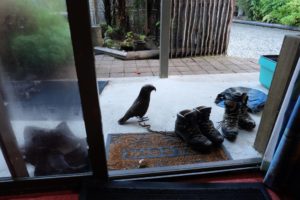
But with work being done by people like SIRCET and Darren and Robbie — using 21st Century smarts to tackle the task of looking after Aotearoa’s natural taonga — there’s every chance of making real what was a pipe dream a couple of generations ago. Getting rid of predators is not about winding back the clock (an impossibility) and pretending we never happened, but about living peaceably in this place.
Back in Wellington, admiring a screensaver of the kaka flashing its flame-orange underwing, I’m drawn to wonder: wouldn’t it be great if New Zealand’s other two islands could ‘go Native’ as well?
This piece was originally posted on the Forest & Bird blog.

